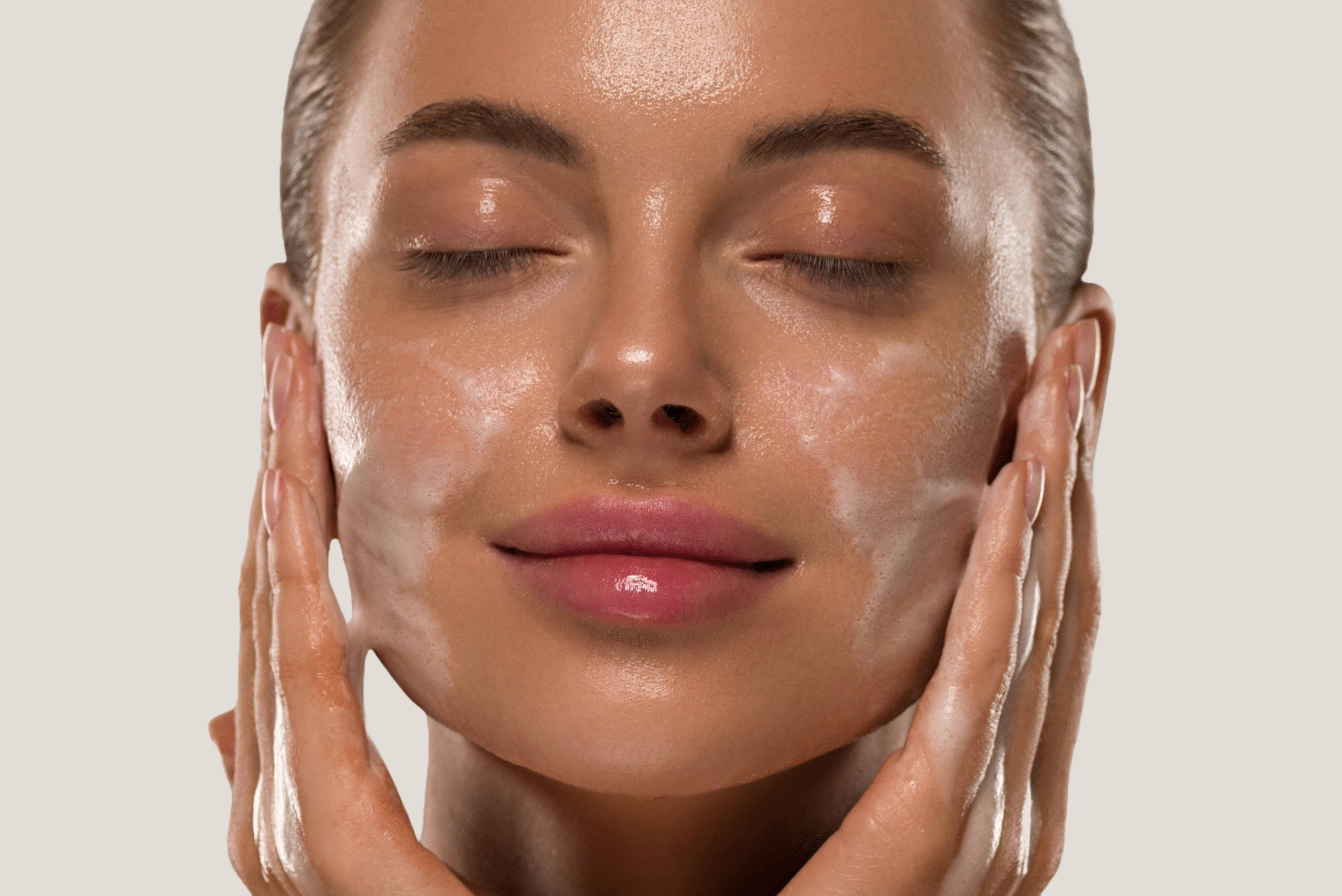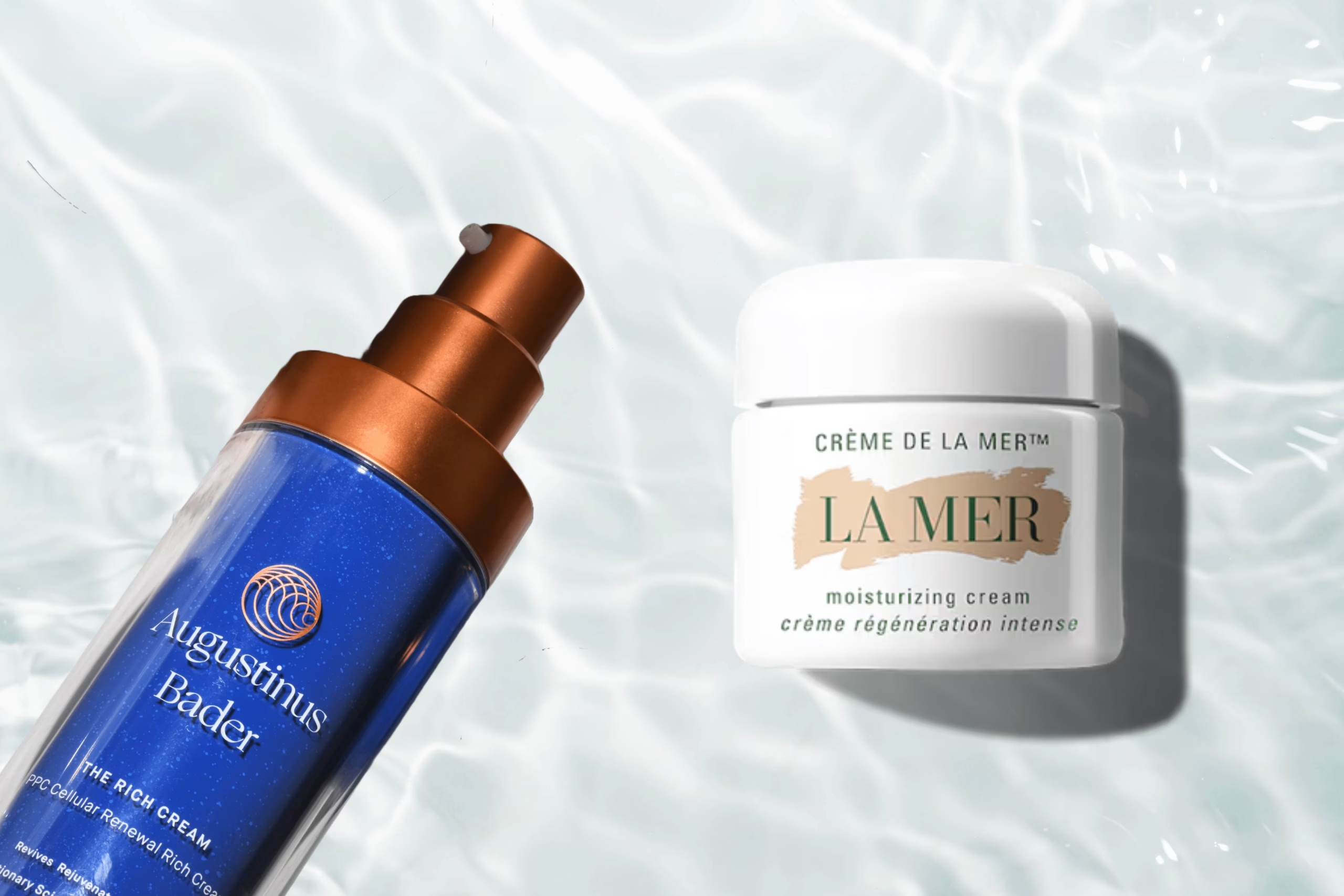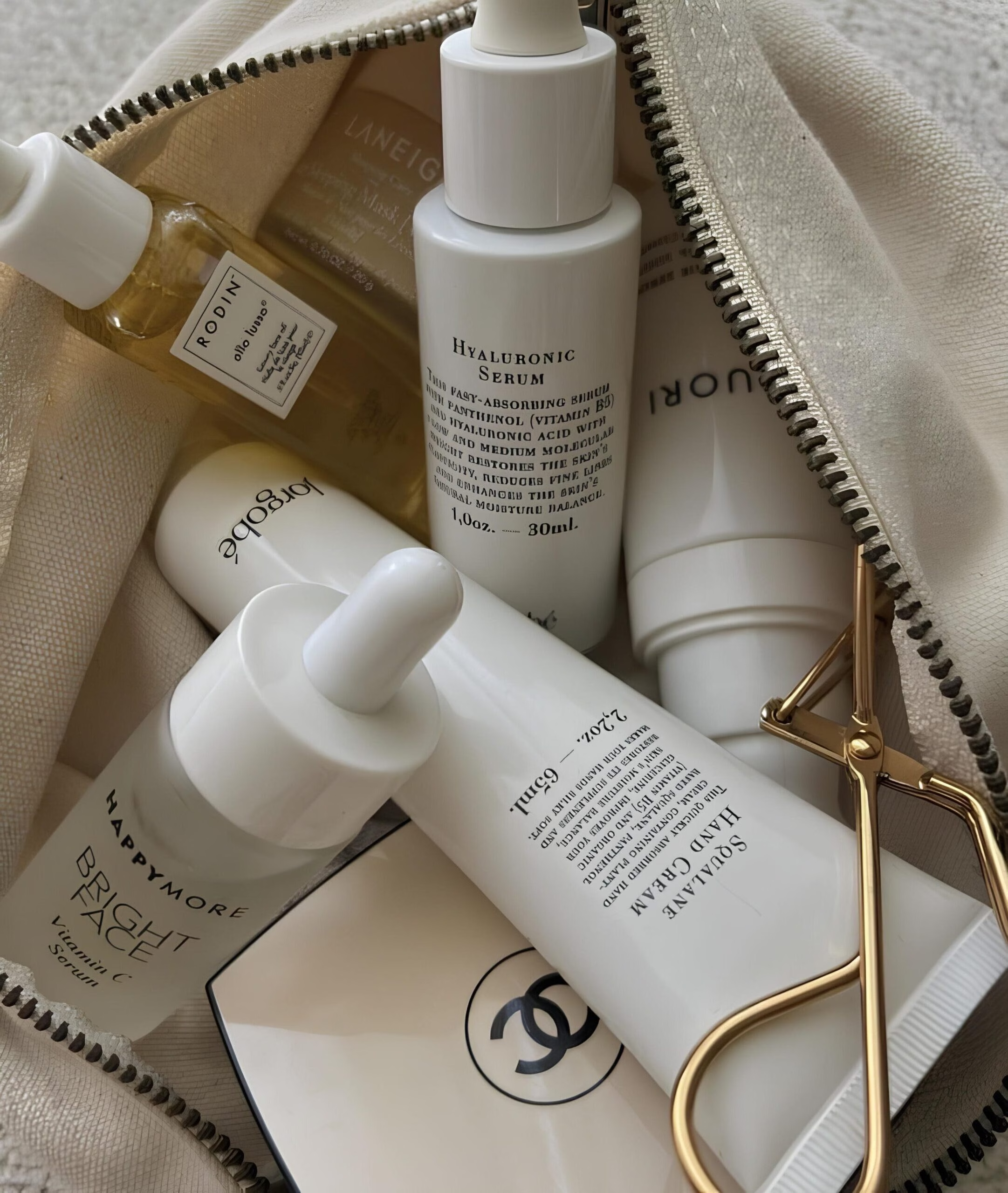Double cleansing hasn’t always been the widespread practice it is today, but it’s quickly become a fixture in modern skin care—thanks, in part, to its roots in K-beauty routines and a renewed focus on thorough, effective cleansing.
The idea is simple: You cleanse twice to ensure every trace of oil, makeup, and daily buildup is removed, creating a cleaner canvas for the treatments that follow. While some dermatologists say this two-step ritual might not be essential for everyone, many people swear by it for clearer pores and fresher-looking skin. Curious whether double cleansing could elevate your nightly routine? Read on to discover what it is, why it’s gained such momentum, and how to make it work for you.
What is Double Cleansing?
Double cleansing is an intentionally layered approach to washing your face, combining two different cleansers—usually an oil-based formula first and a water-based product second—to ensure that every trace of makeup, sunscreen, and daily buildup is thoroughly lifted away. The premise hinges on the idea that “like attracts like,” which is why an oil-based balm can dissolve waterproof mascara and excess sebum more effectively than a standard cleanser. Once that initial grime is gone, the second step (often a gentle foam, gel, or cream) addresses any remaining sweat, dust, and water-soluble residue. The result is a complexion that feels deeply cleansed, yet never stripped—an ideal canvas for whatever serums or moisturizers follow.
Why Double Cleanse?
One of the biggest draws of double cleansing is its power to remove makeup and daily grime that a single cleanse often leaves behind. If you’ve ever found traces of mascara or foundation on your pillow, you know how easily remnants can linger. By starting with an oil-based cleanser, you dissolve stubborn cosmetics and city-borne pollutants, setting the stage for a fresher second cleanse and eliminating the need for excessive scrubbing.
This thorough approach also refines the look of pores. Although genetics determine pore size, regular removal of excess oil and debris helps prevent stretching, giving pores a smaller, more uniform appearance. In turn, double cleansing often leads to fewer blackheads and a calmer complexion since clogged pores are less likely to form.
Another perk is how much better your serums, retinols, and moisturizers can work when there’s no leftover residue blocking their path. A truly clean slate allows these products to absorb more effectively, maximizing their potential benefits. And while double cleansing may sound like extra work, it can actually be gentler on skin. The oil step softens and lifts makeup without harshness, so you’re never resorting to a single intense formula that could leave your face feeling stripped.
Step-by-Step Routine
Double cleansing is the keystone of a thorough face-washing ritual. The steps below guide you through each phase, ensuring makeup, oil, and daily debris are thoroughly lifted away while keeping skin comfortably nourished.
Step 1: Oil or Balm Cleanser
Why It Matters
Oil-based cleansers excel at dissolving makeup, sunscreen, and excess sebum that water-based cleansers sometimes leave behind.
How to Apply
Warm a small amount between your fingertips, then gently massage onto dry skin for about 30–60 seconds. Pay extra attention to areas where buildup tends to accumulate, like around the eyes and nose.
If your cleanser emulsifies, add a bit of water to turn it milky before rinsing with lukewarm water. Avoid overly hot water, which can strip your skin’s natural moisture.
Shop the Editor's Picks
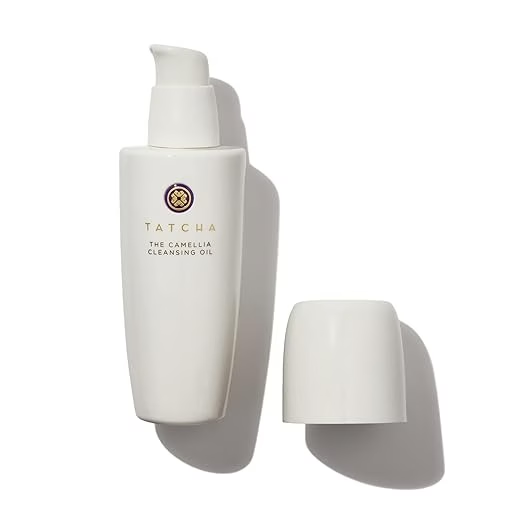
Tatcha Pure One Step Camellia Cleansing Oil
Luxurious blend of Japanese camellia oil that dissolves makeup and nourishes skin.
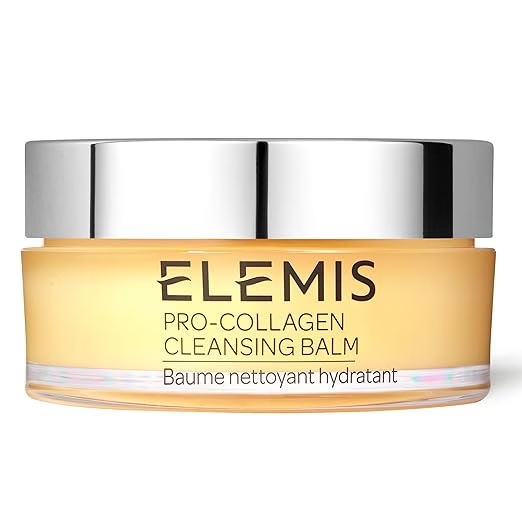
Elemis Pro-Collagen Cleansing Balm
Spa-like balm infused with rose and mimosa waxes, melting away makeup for a soft, radiant finish.
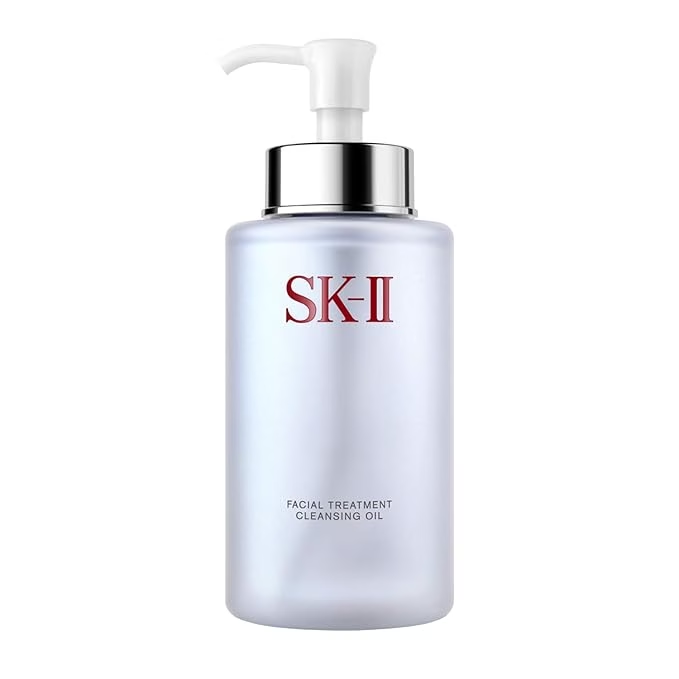
SK-II Facial Treatment Cleansing Oil
Infused with Pitera to gently remove impurities, maintaining a smooth, hydrated complexion.
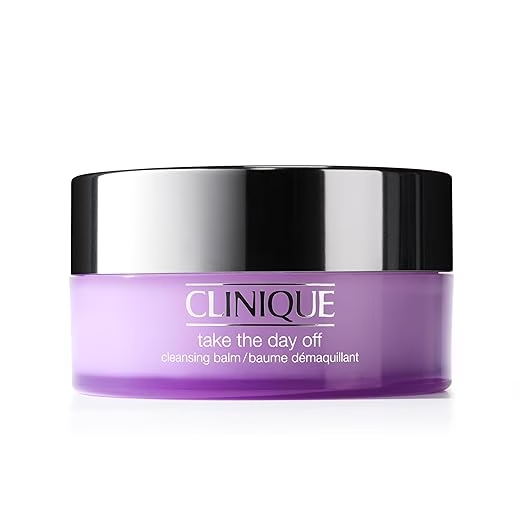
Clinique Take The Day Off Cleansing Balm
Lightweight, fragrance-free balm that easily lifts stubborn makeup without irritating sensitive skin.
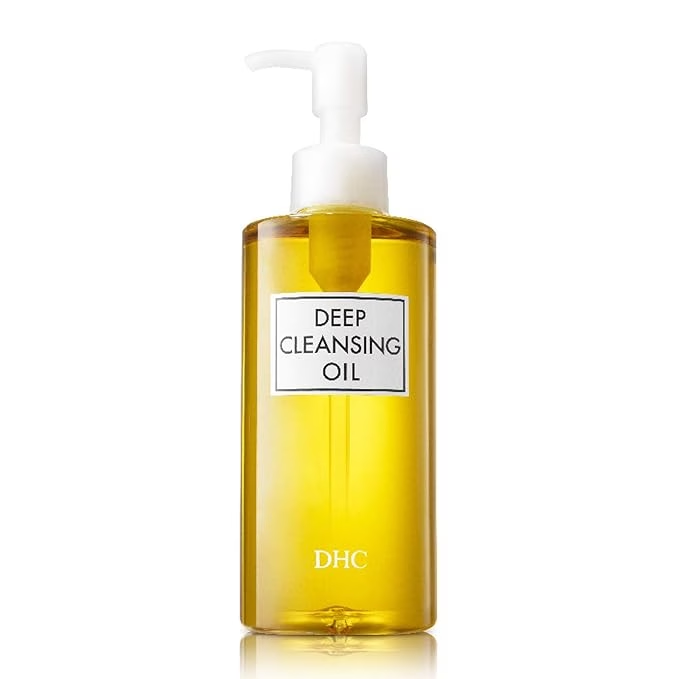
DHC Deep Cleansing Oil
Cult-favorite olive oil–based cleanser that cuts through waterproof formulas, leaving no greasy residue.
Step 2: Water-Based Cleanser
Why It Matters
A water-based wash sweeps away any lingering oil-based residue, plus water-soluble debris like sweat and dust, for a truly refreshed complexion.
How To Apply
With a damp face, massage a gel, foam, or cream cleanser for about 30 seconds to a minute, focusing on the hairline and jawline.
Use lukewarm water to rinse, then pat—rather than rub—your skin with a soft towel to lock in moisture and maintain a calm, balanced finish.
Shop the Editor's Picks
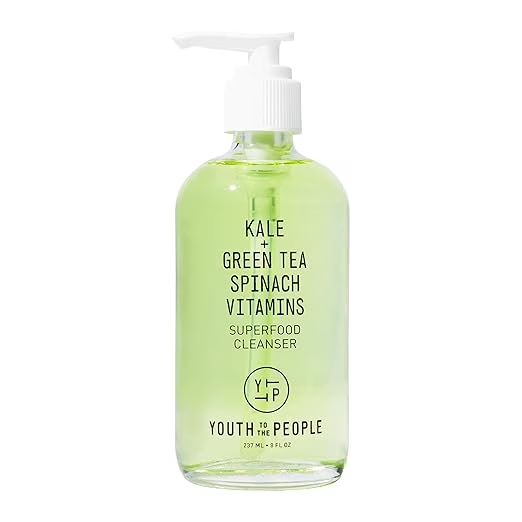
Youth to the People Superfood Cleanser
Packed with kale and spinach extracts, this green juice-inspired cleanser clears away impurities without sacrificing essential moisture.
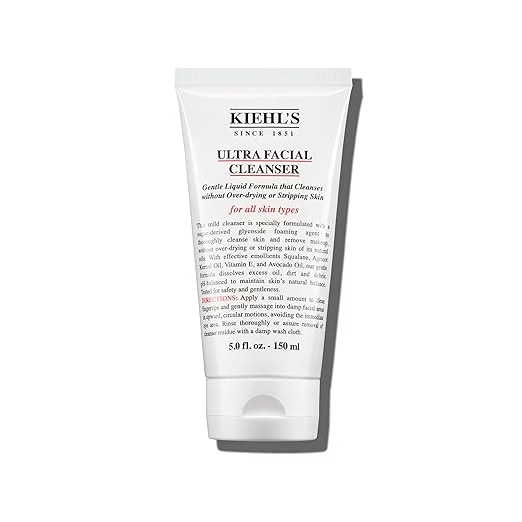
Kiehl’s Ultra Facial Cleanser
A mild, pH-balanced formula that removes dirt and oil without stripping, making it suitable for daily use across different skin types.
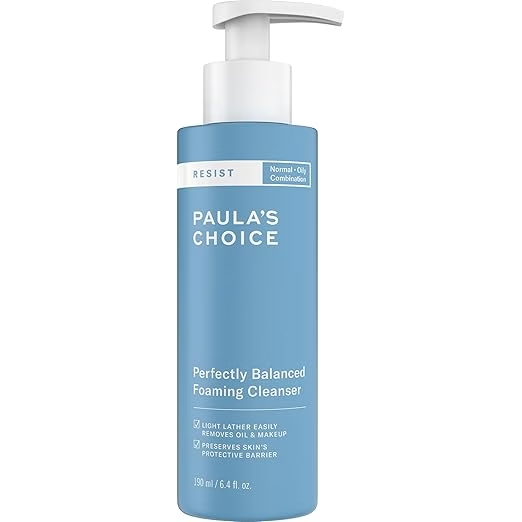
Paula’s Choice Perfectly Balanced Foaming Cleanser
Targets shine and congestion with a gentle foam, while retaining the skin’s natural moisture for a comfortable, balanced finish.
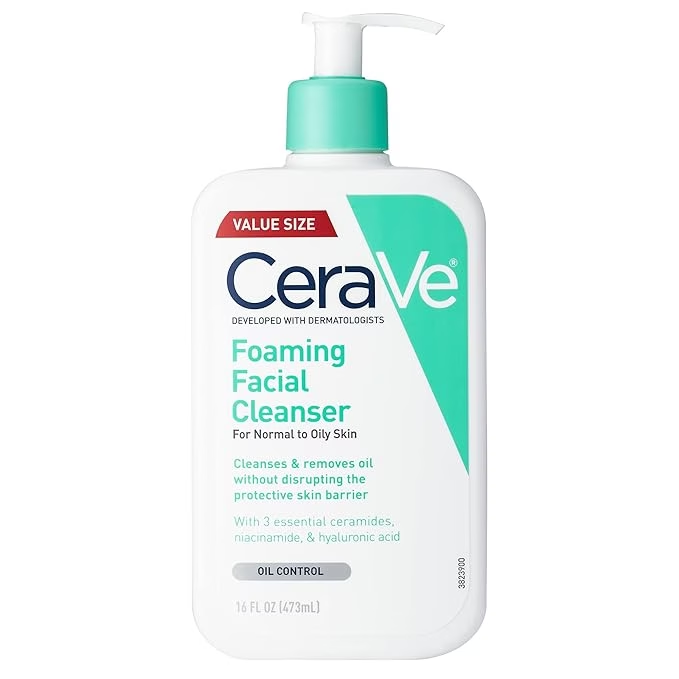
CeraVe Foaming Facial Cleanser
Formulated with ceramides to maintain the skin barrier, plus niacinamide to soothe and reduce excess oil.
After Double Cleansing: Building a Full Skincare Routine
Double cleansing lays the groundwork for a deeply purified complexion, but it’s only the beginning. Once your face is thoroughly cleansed, the following steps help each product penetrate more effectively—resulting in a balanced, radiant routine from start to finish
Step 3: Toner or Essence
Purpose
Helps restore the skin’s pH, provides light hydration, and prepares the complexion for additional treatments.
Step 4: Targeted Serums or Treatments
Purpose
Addresses specific issues such as breakouts, hyperpigmentation, or fine lines.
Tips
- Retinol/Retinoids: Ideal for nighttime to support cell turnover.
- Vitamin C: Protects against free radicals and brightens, perfect for morning use.
- Niacinamide: Regulates oil and improves overall texture.
Step 5: Moisturizer
Purpose
Locks in hydration and reinforces the skin barrier.
Step 6: SPF (Morning Only)
Purpose
Shield your skin against UV damage with at least SPF 30, particularly if you use exfoliating or brightening products that heighten sun sensitivity.
Double Cleansing for Your Skin Type
Oily or Acne-Prone Skin
An oil or balm cleanser helps dissolve excess sebum, creating a clean slate before you move on to a foam or gel cleanser containing clarifying ingredients like salicylic acid or niacinamide. This two-step approach helps prevent blackheads and breakouts by reducing pore congestion.
Dry or Dehydrated Skin
A nourishing oil or balm cleanser works wonders for removing debris without depleting your skin’s natural moisture. Following up with a creamy, moisture-focused second cleanser ensures you’re left with a velvety finish, rather than a sensation of tightness.
Combination Skin
Balancing an oily T-zone with drier cheeks might require some experimentation. Many people thrive with nightly double cleansing, while others find that every other day is enough, particularly if their non-T-zone areas feel too dry. Adjust the frequency based on how your skin responds.
Sensitive or Reactive Skin
Gentle formulas are essential if you’re prone to redness or irritation. Look for fragrance-free, non-comedogenic products, and always patch-test new cleansers. If sensitivity flares up, consider scaling back to a two-step cleanse only a few nights a week or switching to even milder options altogether.
Additional Benefits and Tips
One noticeable perk of double cleansing is its ability to disrupt the cycle that leads to stubborn blackheads. By removing impurities before they have a chance to oxidize, you’ll see fewer dark spots embedded in pores. Skin prep also plays a crucial role in makeup application; when your face is thoroughly cleansed, foundations and concealers sit more naturally, blending in rather than catching on patches of residue or uneven texture.
Striking a balance is essential. If you experience persistent dryness or feel an uncomfortable tightness after washing, you might need gentler cleansers or to reduce how often you double cleanse. Always seal the deal with a layer of moisturizer—adequate hydration is key to that radiant, supple look. And if you’re heading out during the day, don’t skip sunscreen. Protecting your freshly cleansed skin from UV damage is one of the best ways to safeguard your glow and prevent premature aging.
Double Cleansing FAQs
Is Double Cleansing Good for Your Skin?
Yes, provided you use products suited to your skin type. The first (oil-based) step lifts makeup, sunscreen, and oil-soluble impurities, while the second (water-based) step tackles any leftover debris. This comprehensive approach often leads to fewer breakouts and better skin texture. However, opt for gentle, non-stripping formulas to avoid dryness or irritation.
Should I Double Cleanse If I Don’t Wear Makeup?
Even if you skip makeup, most people use sunscreen or encounter urban pollutants daily. A two-step cleanse can still clear away excess sebum and microscopic particles that cling to your skin. If you have very dry or sensitive skin, consider double cleansing only at night or on alternate days to prevent over-cleansing.
Can I Use Micellar Water for Double Cleansing?
Micellar water can serve as a light first cleanse, especially for sensitive skin or minimal makeup days. It gently lifts impurities without needing water. However, many prefer an oil-based or balm cleanser for breaking down stubborn sunscreen or waterproof products. If you choose micellar water, follow it with a water-based cleanser to remove any remaining residue.
How Often Should You Double Cleanse?
Most people double cleanse in the evening, especially if they’ve worn makeup or sunscreen all day. In the morning, a single gentle cleanse is often enough unless you’re very oily or sweat heavily overnight. Pay attention to how your skin feels—if dryness or tightness sets in, try reducing the frequency.
Does Double Cleansing Help with Blackheads and Pores?
By thoroughly eliminating oil, dirt, and makeup, double cleansing reduces the buildup that can lead to blackheads and clogged pores. Although it won’t physically shrink your pores, it can minimize their appearance by keeping them free of debris.
Can You Use the Same Cleanser for Both Steps?
Using one water-based cleanser twice isn’t as effective as pairing an oil-based first step with a water-based second step. Oil-based cleansers are formulated to dissolve oil-soluble grime—like makeup and sebum—more thoroughly than a standard gel or foam cleanser.
Is Double Cleansing Necessary for Acne-Prone Skin?
It can be highly beneficial. Acne-prone skin often produces more sebum, which traps bacteria and dead skin cells. An oil-based cleanser helps loosen these impurities, while a gentle, clarifying second cleanser (with salicylic acid, for example) can further reduce breakouts. Avoid harsh, stripping products that may irritate acne-prone skin.
Can Double Cleansing Irritate or Dry Out Skin?
Over-cleansing can happen if you use harsh or unsuitable products, or if you do it too often. Signs of irritation include redness, tightness, or sensitivity. To prevent this, choose mild, pH-balanced formulas and consider adjusting your routine (e.g., fewer times per week) if you notice discomfort.
What’s the Difference Between Oil Cleansing and Double Cleansing?
Oil cleansing is simply the first step in a double cleanse, where you use an oil or balm to remove oil-based debris like makeup and sunscreen. A double cleanse goes a step further by following up with a water-based or foaming cleanser, ensuring both oil-soluble and water-soluble impurities are completely removed.
Should I Double Cleanse in the Morning or at Night?
Most people find it most helpful at night, especially after wearing makeup or sunscreen. However, if you have very oily skin or apply heavy night creams, you may also benefit from a morning double cleanse. Ultimately, listen to your skin and adjust your routine to its specific needs.

